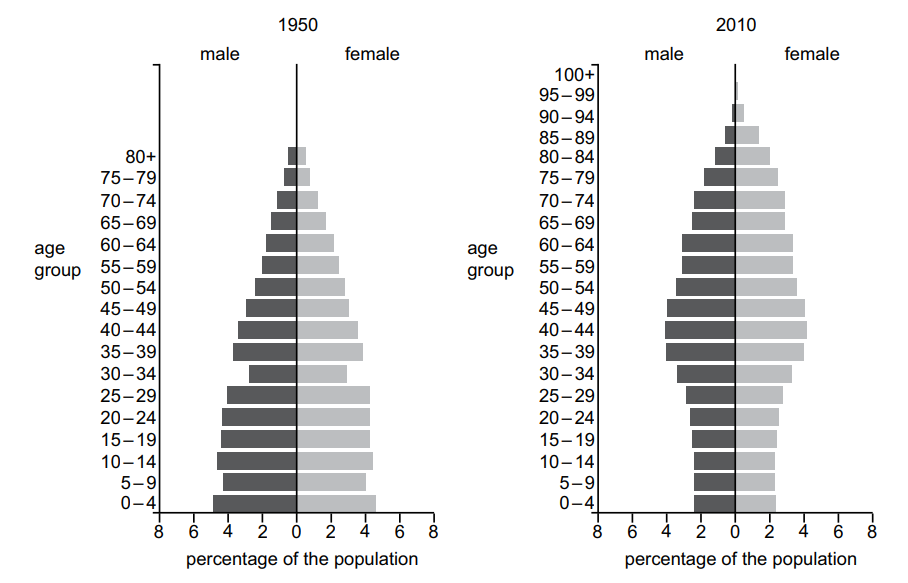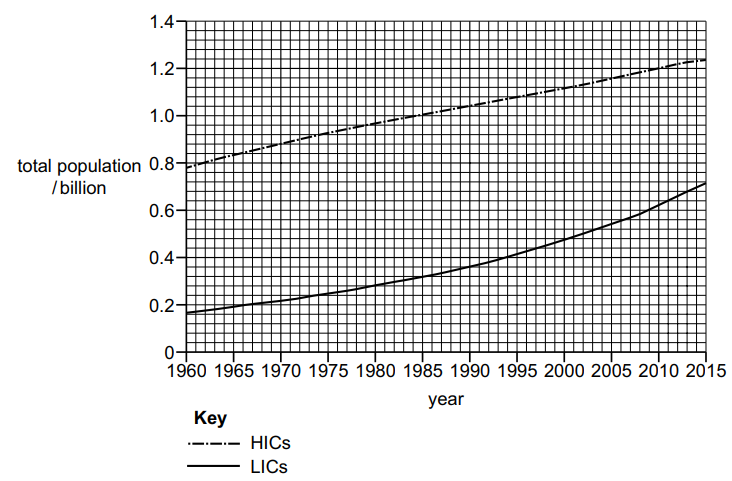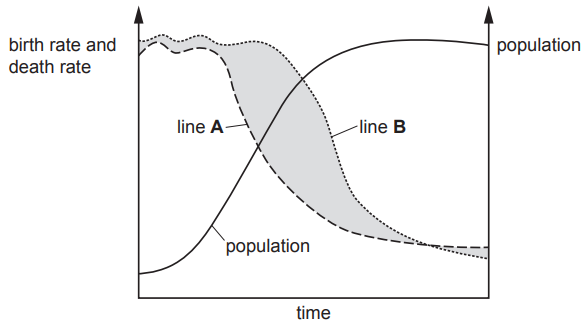Italy is a high-income economy country (HIC) in Europe and Bangladesh is a low-income economy country (LIC) in Asia. Table 1.1 shows population data for Italy and Bangladesh in 1990 and 2010.
Table 1.1
country | area / km2 | population 1990 | population density 1990 / people km–2 | population 2010 | population density 2010 / people km–2 | percentage increase in population density |
Bangladesh | 147 630 | 105 983 136 | 151 616 777 | 1027.0 | 43.1 | |
Italy | 301 340 | 57 007 577 | 189.2 | 59 588 066 | 197.7 |
(i) Calculate the population density of Bangladesh in 1990.
Give the answer to 1 decimal place.
population density 1990 ..................................... people km–2
[2]
(ii) Calculate the percentage increase in population density for Italy.
Give the answer to 3 significant figures.
percentage increase .......................................................%
[2]
(iii) Suggest how social factors can cause the changes in population density in Bangladesh and Italy. Refer to the data in your answer.
[4]
Fig. 1.1 shows two population pyramids representing the percentage of the population in different age groups in Italy in 1950 and 2010.

Fig. 1.1
(i) Describe the changes in population distribution using data from Fig. 1.1.
[2]
(ii) Describe the impacts that the changes in (i) could cause.
[3]
Did this page help you?

